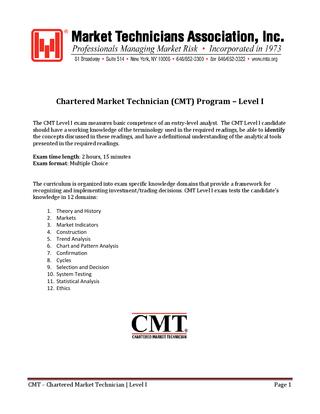Содержание

Over time, an item’s worth decreases in value due to natural factors. When you do your taxes, you can often take write-offs for certain assets of yours that have depreciated in value. In the above mentioned example, the monthly income statements will show a depreciation charge of $1,000. Depreciation expenditure of $3,000 will be shown in the quarterly income statements, and $12,000 will be reported in the yearly income statements.
Not accounting for depreciation can greatly affect a company’s profits. Companies can also depreciate long-term assets for both tax and accounting purposes. The term depreciation refers to an accounting method used to allocate the cost of a tangible or physical asset over its useful life. Depreciation represents how much of an asset’s value has been used. It allows companies to earn revenue from the assets they own by paying for them over a certain period of time.
Example of Depreciation
It is also known as the fixed instalment method and is one of the most commonly used ways of calculation. With this test grade calculator, you’ll quickly determine the test percentage score and grade. Our sell-through rate calculator can help you analyze the inventory management of your business. In order to use this model, you need to calculate the depreciation base according to the formula. For sure, one of the most interesting cases of depreciation is the loss of value of a motor vehicle.

An asset is depreciated on the basis of the total number of units that are generated by utilizing the asset or the total number of hours for which it has been used across its lifespan. In regards to depreciation, salvage value is the estimated worth of an asset at the end of its useful life. If the salvage value of an asset is known , the cost of the asset can subtract this value to find the total amount that can be depreciated.
Depreciation: Definition, Formula & Examples
A depreciation expense formula uses the unit of production method of calculating depreciation to charge more expenses when using an asset a lot and less when the situation is reversed. Another way to account for expenses of assets that depreciate is the double-declining method. This technique differs from the straight-line method because it is much more accelerated. In fact, it functions in the same way but more than doubles the depreciation rate.
After a Very Strong 2021, Eurofins Fully Compensates for the … – Business Wire
After a Very Strong 2021, Eurofins Fully Compensates for the ….
Posted: Wed, 01 Mar 2023 06:15:00 GMT [source]
In Accounts, Depreciation can be defined as the method of allocating the cost of a physical asset over its useful life or the time period it is to be used for. In simple words, depreciation is the reduction in the value of an asset due to the passage of time, normal wear and tear and obsolescence. Depreciation is generally regarded as a non-cash expenditure and helps companies to reduce their taxable income.
The total amount of depreciation for any asset will be identical in the end no matter which method of depreciation is chosen; only the timing of depreciation will be altered. For accounting, in particular, depreciation concerns allocating the cost of an asset over a period of time, usually its useful life. When a company purchases an asset, such as a piece of equipment, such large purchases can skewer the income statement confusingly. Instead of appearing as a sharp jump in the accounting books, this can be smoothed by expensing the asset over its useful life. Within a business in the U.S., depreciation expenses are tax-deductible. The concept of depreciation is important from the perspective of financial accounting and reporting.
The Sinking fund method of depreciation is a method of calculating depreciation where enough amount is accumulated at the end to replace the asset at the end of its useful life. Here the amount of depreciation is charged to a sinking fund account which is invested in various government bonds and securities. The interest earned from these securities is used to replace the asset. Depreciation is an important part of accounting records which helps companies maintain their income statement and balance sheet properly with the right profits recorded. Using good business accounting software can help you record the depreciation correctly without making manual mistakes. Depreciation expense is referred to as a noncash expense because the recurring, monthly depreciation entry does not involve a cash payment.
Methods of Depreciation and How to Calculate Depreciation
It is calculated by simply dividing the cost of an asset, less its salvage value, by the useful life of the asset. Depreciation is considered a non-cash charge because it doesn’t represent an actual cash outflow. The entire cash outlay might be paid initially when an asset is purchased, but the expense is recorded incrementally for financial reporting purposes. That’s because assets provide a benefit to the company over a lengthy period of time. But the depreciation charges still reduce a company’s earnings, which is helpful for tax purposes.
In case of straight-line depreciation calculation, the amount of expense is the same for each year of the asset lifespan. Depreciation is an accounting method of allocating the cost of a tangible asset over its useful life to account for declines in value over time. Accounting for the loss of value of the assets helps companies understand the actual cost of doing business.
In a few instances, with the expiry of legal rights which are inherent to a certain class of assets, the latter loses its value with the expiry of the pre-determined period. Depreciation is a loss of value that takes place for tangible assets due to the passage of time. This formula is best for production-focused businesses with asset output that fluctuates due to demand.

This assignment makes the method very useful in assembly for production lines. Hence, the calculation is based on the output capability of the asset rather than the number of years. The calculation of the written-down value is done by subtracting the amortization or the accumulated depreciation from the original value of the asset. The depreciation becomes a fixed percentage of the asset’s original cost. The written-down value figure will reflect on the balance sheet.
What is the Depreciation Formula?
This “smooths out” the company’s income statement so that rather than showing the $100k expense entirely this year, that outflow is effectively being spread out over 5 years as depreciation. The depreciation expense, despite being a non-cash item, will be recognized and embedded within either the cost of goods sold or the operating expenses line on the income statement. With the straight line depreciation method, the value of an asset is reduced uniformly over each period until it reaches its salvage value. Straight line depreciation is the most commonly used and straightforward depreciation method for allocating the cost of a capital asset.
There is no accompanying cash outflow because this is a non-monetary item. In accounting, the depreciation expense is the allocation of the cost of the asset to the accounting periods over which it is to be used. The allocation is necessary to comply with the matching principle, ensuring that the expense of owning the asset is matched to the revenues generated by the asset. If we have closely checked, the term ‘depreciation’ has two different meanings.
Accelerated Depreciation Methods
Hence, companies that do not use the depreciation expense in their accounts will incur front-loaded expenses and highly variable financial results. Depreciation expense is the appropriate portion of a company’s fixed asset’s cost that is being used up during the accounting period shown in the heading of the company’s income statement. For specific assets, the newer they are, the faster they depreciate in value. In these situations, the declining balance method tends to be more accurate than the straight-line method at reflecting book value each year. The units-of-production method depreciates equipment based on its usage versus the equipment’s expected capacity.
The unit of production method requires an estimated number of how many hours an asset can be used in total. With this value in mind, recall the asset’s original value and salvageable value. Depreciation allows a business to write off the loss it experiences through the wearing down of assets. There are many ways of figuring depreciation, but the straight-line method is the simplest and the most popular. Generally, depreciation is calculated using the asset’s cost, residual value, and useful life.
- The total amount of depreciation for any asset will be identical in the end no matter which method of depreciation is chosen; only the timing of depreciation will be altered.
- Depreciation expenditure of $3,000 will be shown in the quarterly income statements, and $12,000 will be reported in the yearly income statements.
- Businesses can avail of tax deductions for the cost of the assets by reducing the taxable income.
- In regards to depreciation, salvage value is the estimated worth of an asset at the end of its useful life.
- The company expenses another $4,000 next year and another $4,000 the year after that, and so on until the asset reaches its $10,000 salvage value in 10 years.
The unit of production method calculates the depreciation based on the units produced by an asset. It estimates the per-unit depreciation cost and allocates it based on the total units produced. Let’s go through an example using the four methods of depreciation described so far. Assume that our company has an asset with an initial cost of $50,000, a salvage value of $10,000, and a useful life of five years and 3,000 units, as shown in the screenshot below. Our job is to create a depreciation schedule for the asset using all four types of depreciation.
The Depreciation expense is calculated using the following three methods. Thedeclining balance methodis a type ofaccelerated depreciationused to write off depreciation costs earlier in an asset’s life and to minimize tax exposure. With this method, fixed assets depreciate more so early in life rather than evenly over their entire estimated useful life. There are many methods of distributing depreciation amount over its useful life.
Examples of Depreciation Formula (With Excel Template)
On the income statement, depreciation is recorded as a non-cash expense that is treated as a non-cash add back on the cash flow statement. On the balance sheet, the depreciation expense reduces the book value of a company’s property, plant and equipment (PP&E) over its estimated useful life. For example, due to rapid technological advancements, a straight line depreciation method may not be suitable for an asset such as a computer. It would be inaccurate to assume a computer would incur the same depreciation expense over its entire useful life. In addition to straight line depreciation, there are also other methods of calculating depreciation of an asset. Different methods of asset depreciation are used to more accurately reflect the depreciation and current value of an asset.
The amount that is written off every year continues to decrease in this depreciation example as the asset nears the end of its useful life. It is an appropriate method for depreciating assets like laptops and computers that are more productive when they are new. Now that you know what depreciation is, check out six different methods used to calculate it with examples.
Assets with no salvage value will have the same total depreciation as the cost of the asset. Similar to declining balance depreciation, sum of the years’ digits depreciation also results in faster depreciation when the asset is new. It is generally more useful than straight-line depreciation for certain assets that have greater ability to produce in the earlier years, but tend to slow down as they age. Similar to the declining-balance method, the sum-of-the-year’s method also accelerates the depreciation of an asset.
